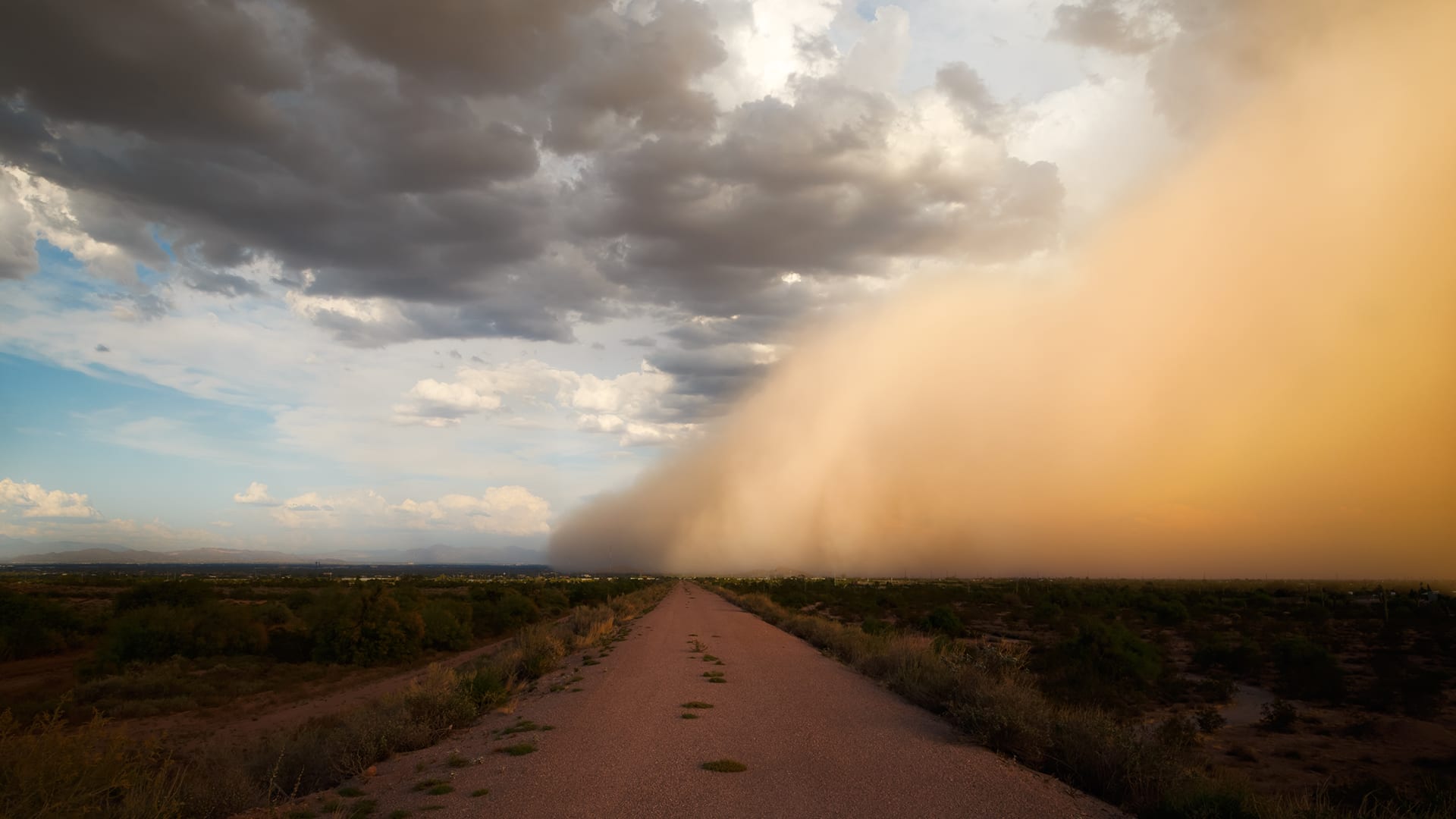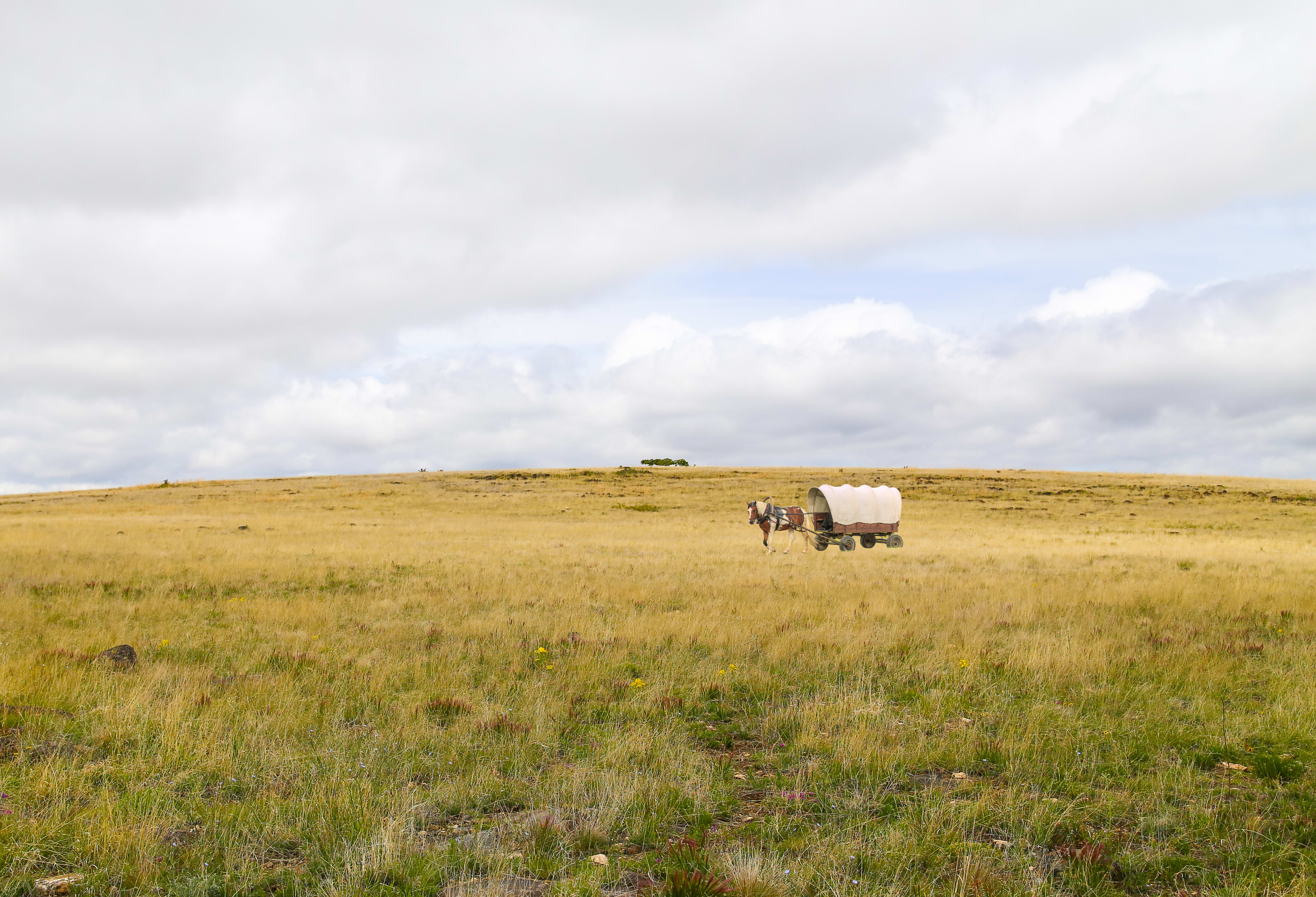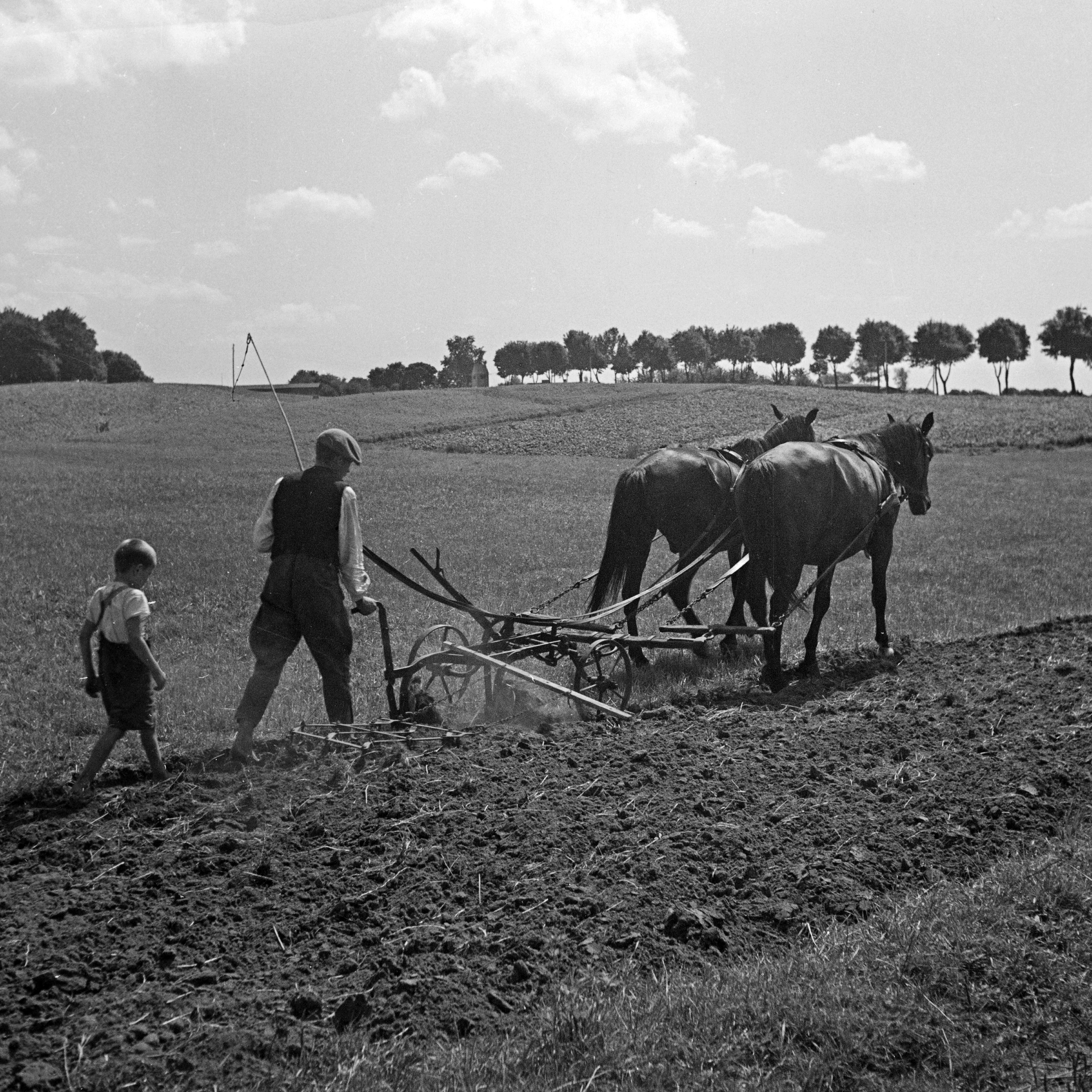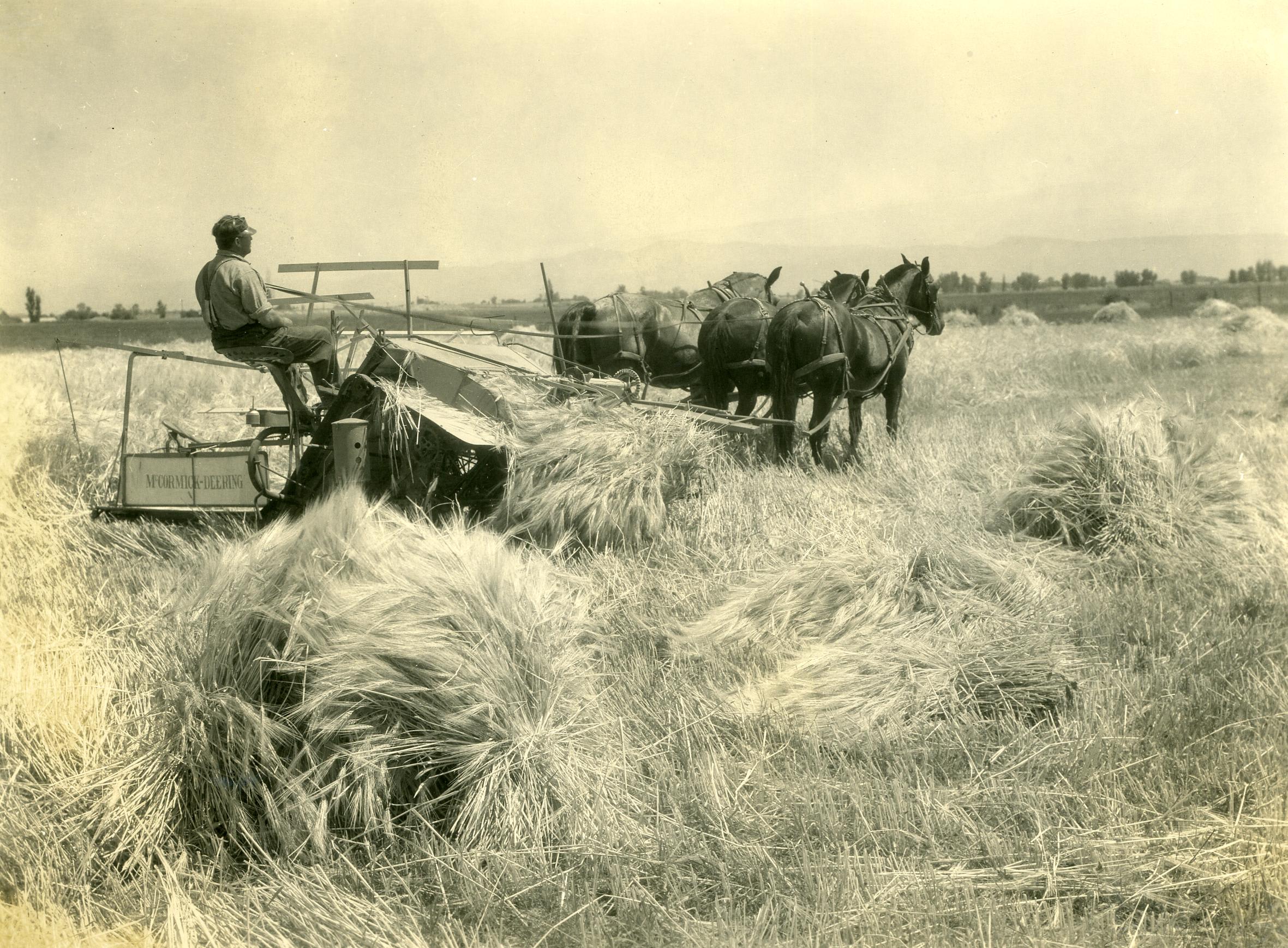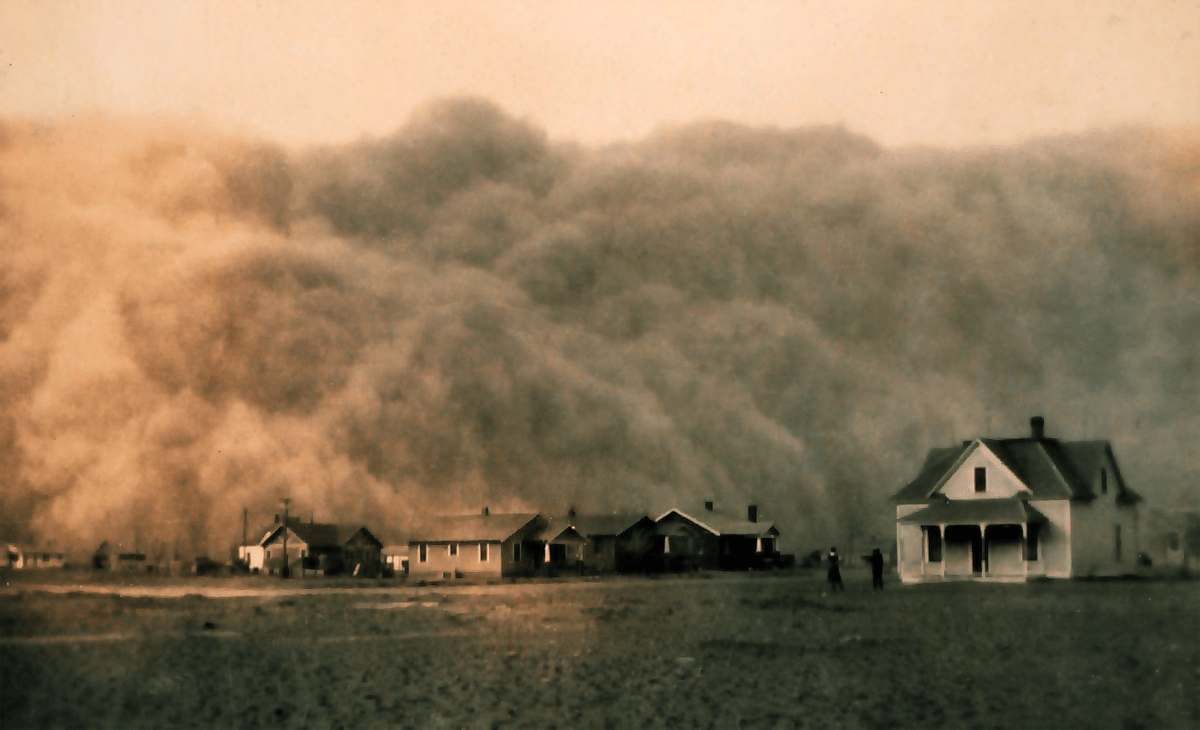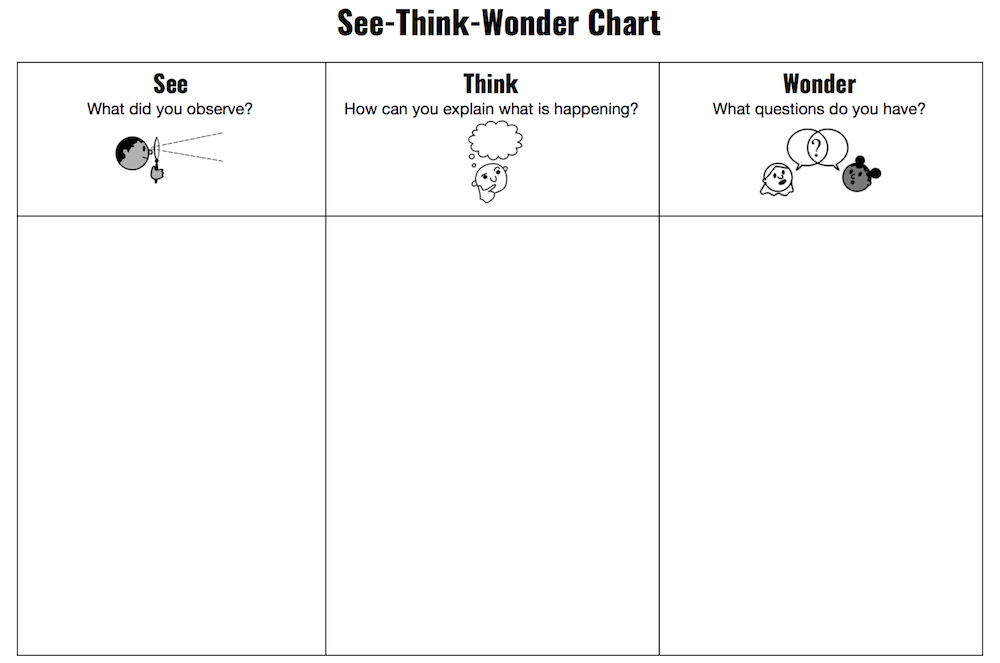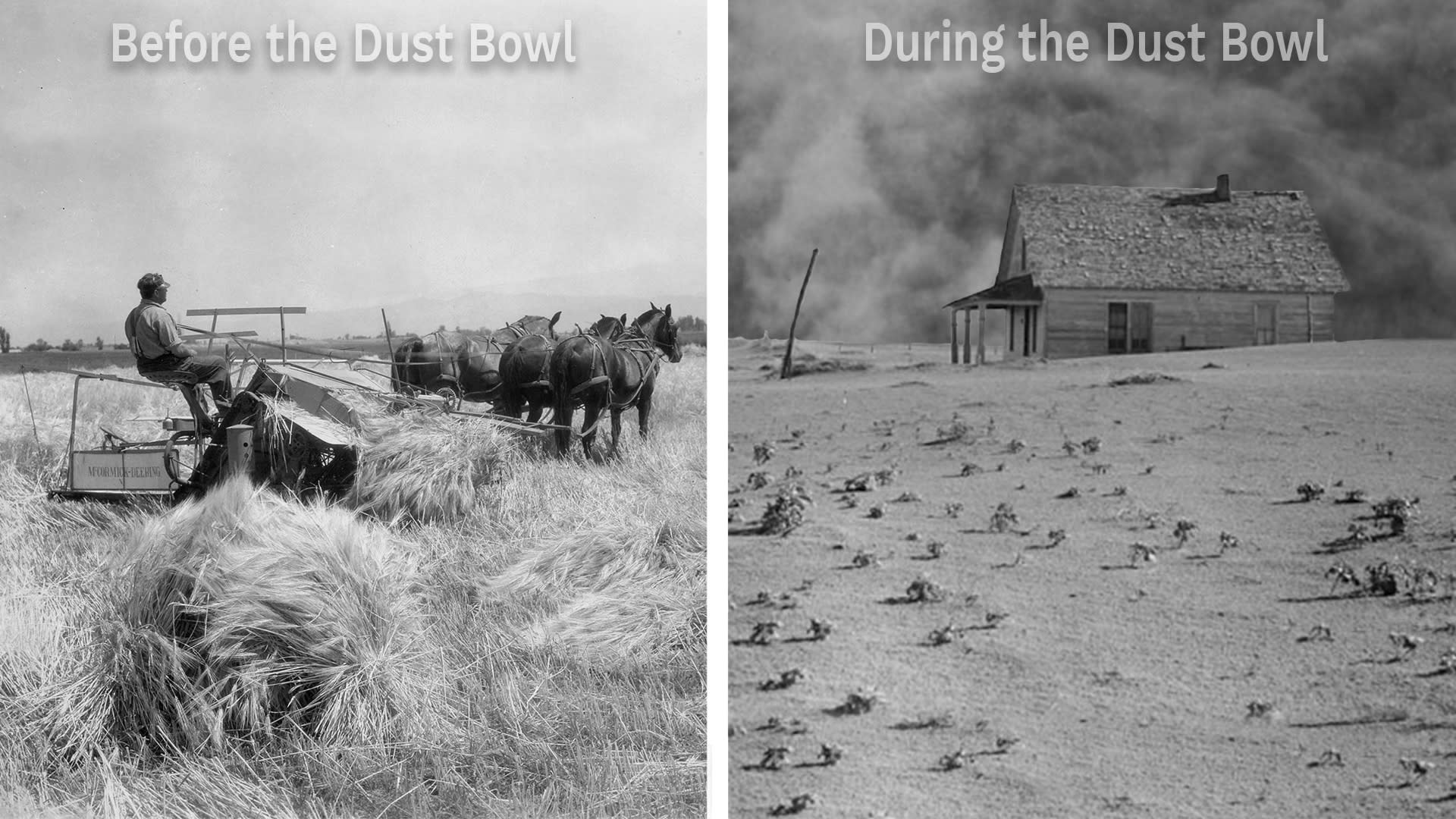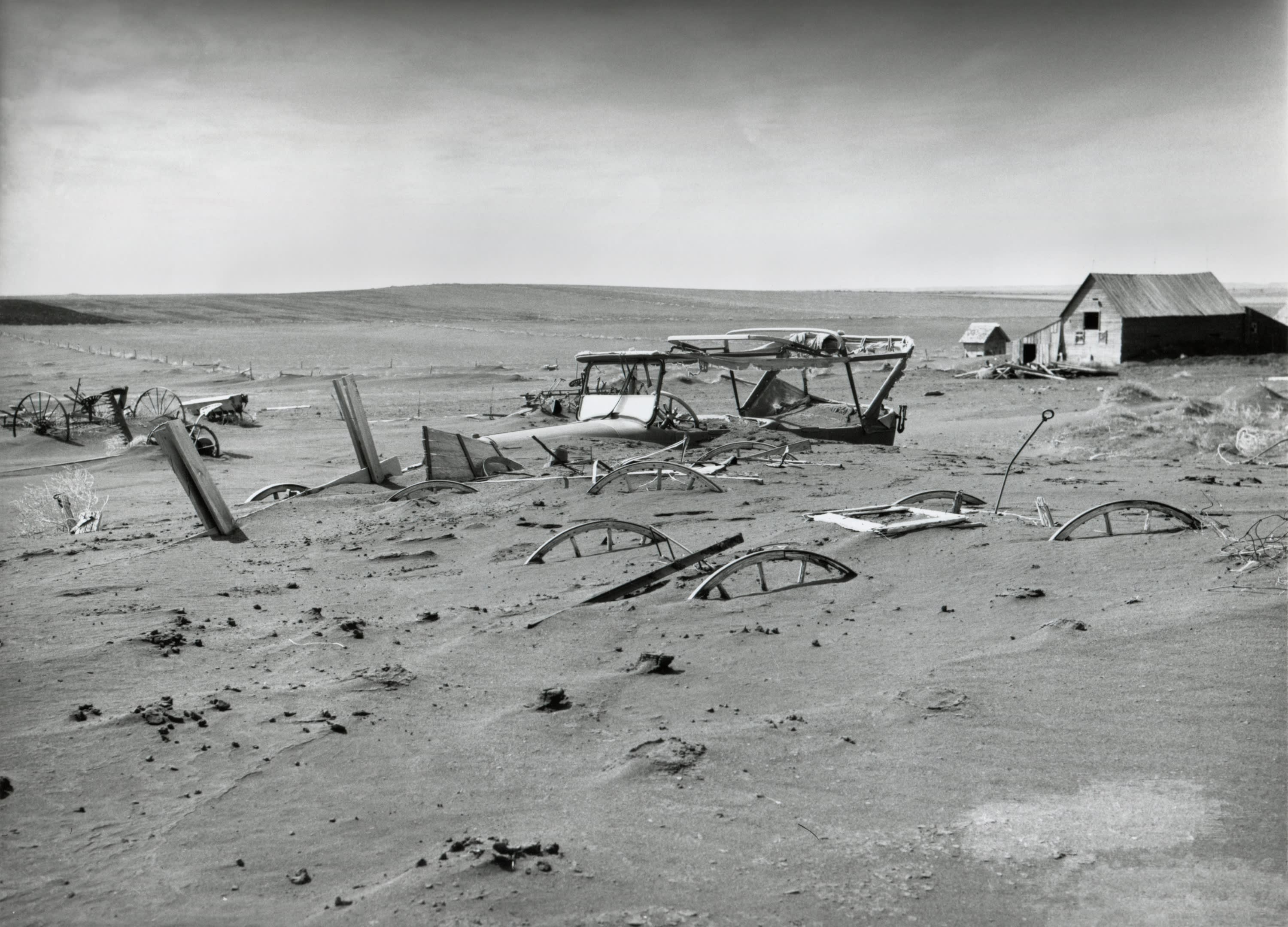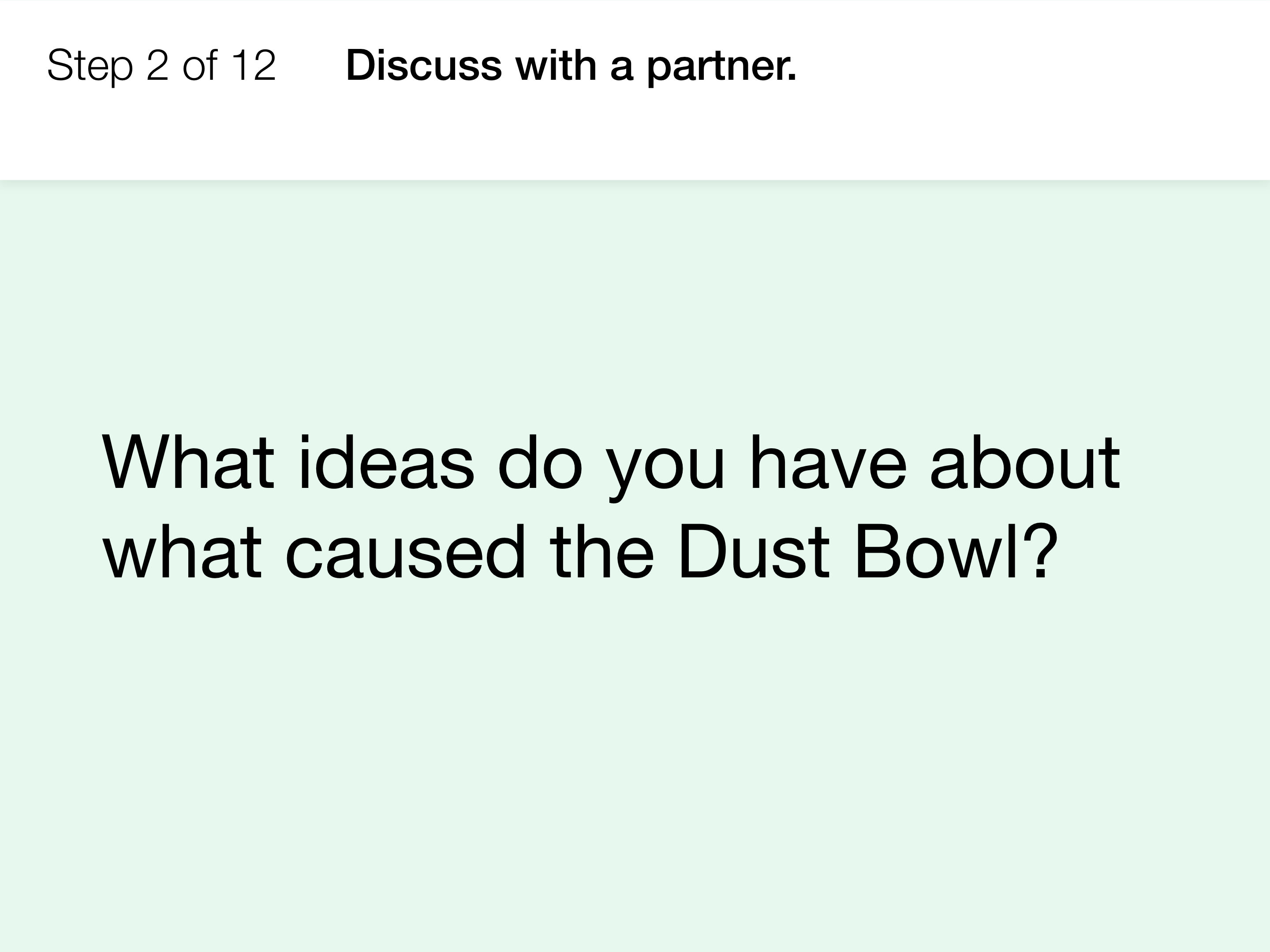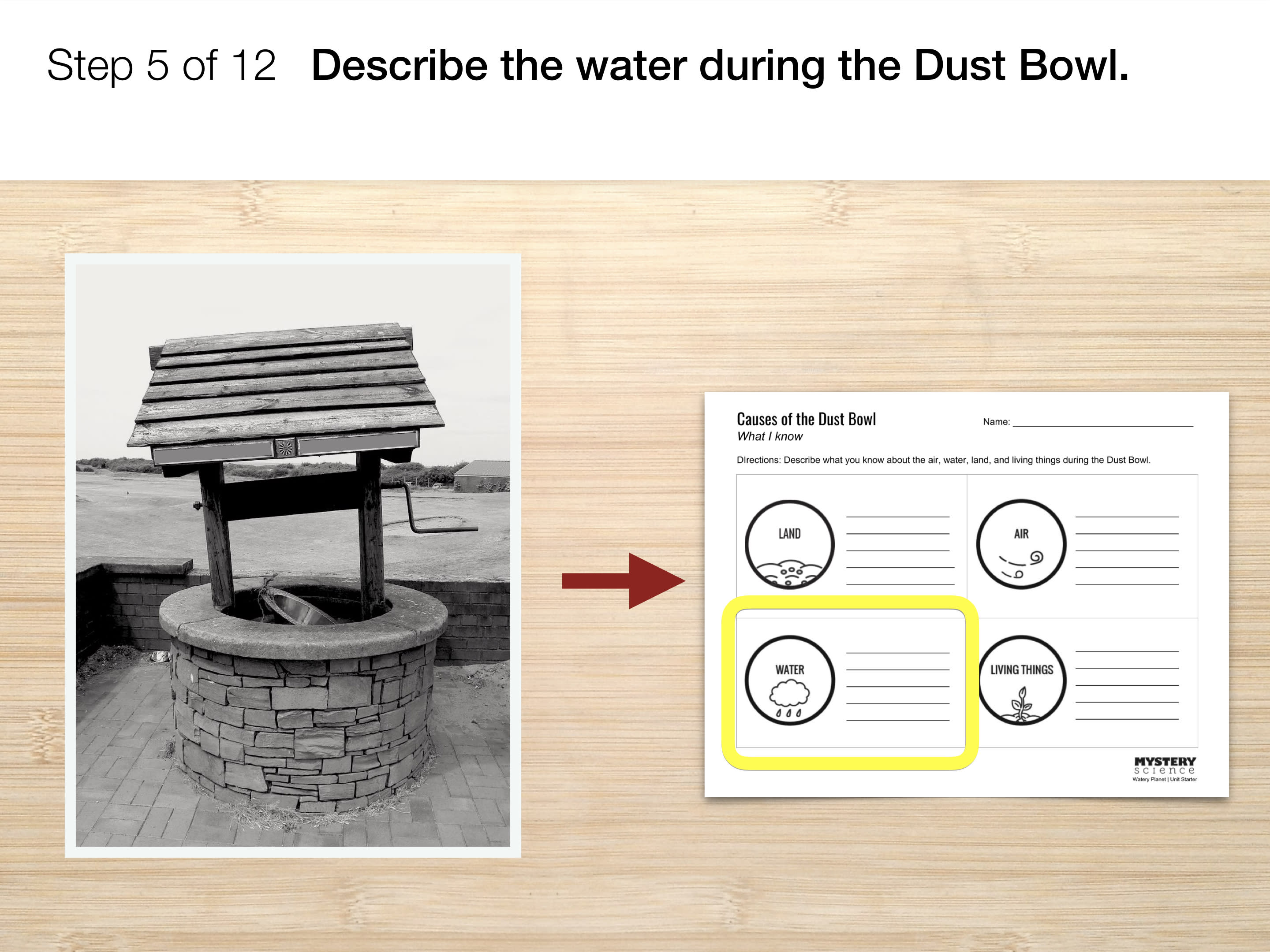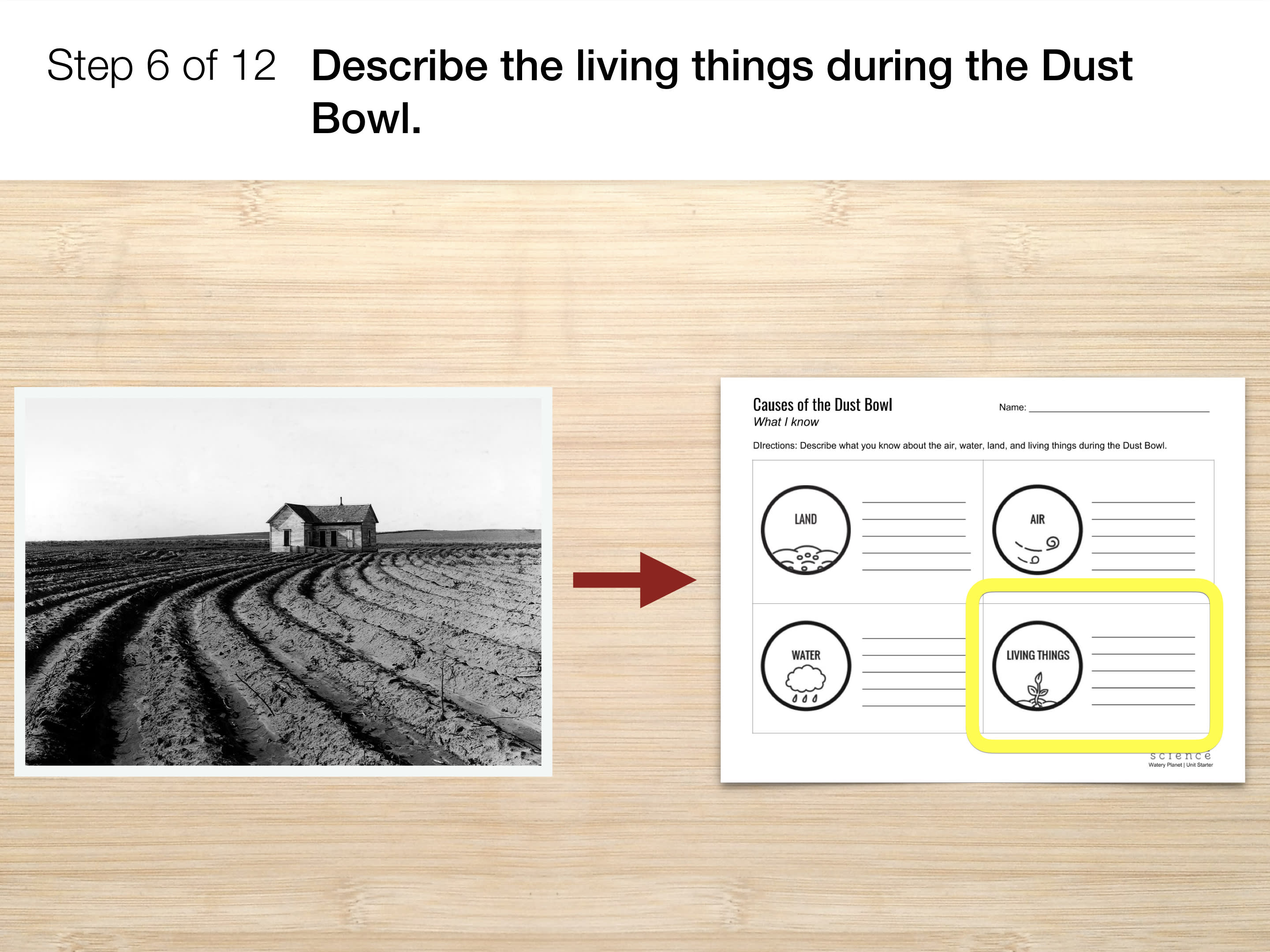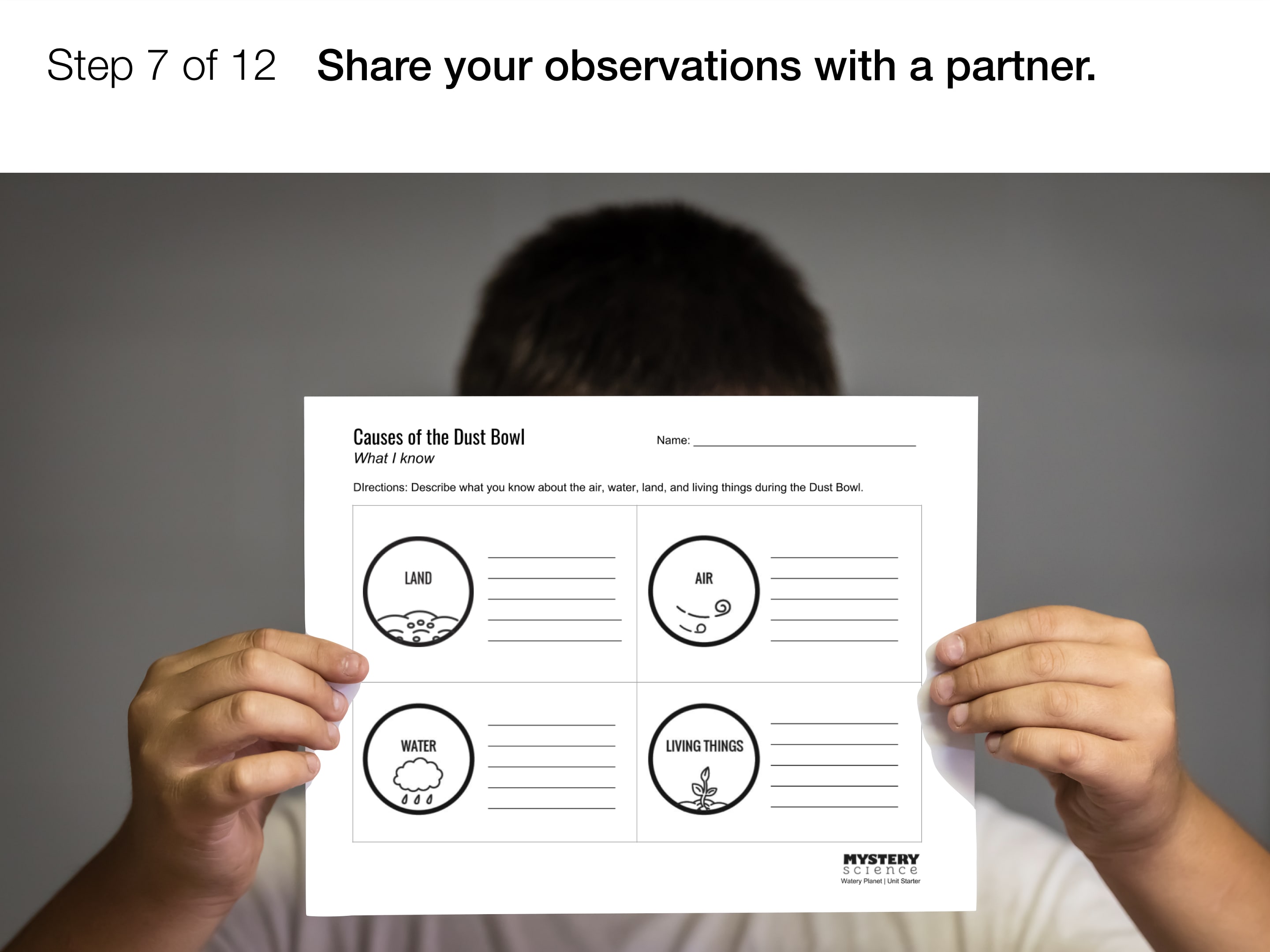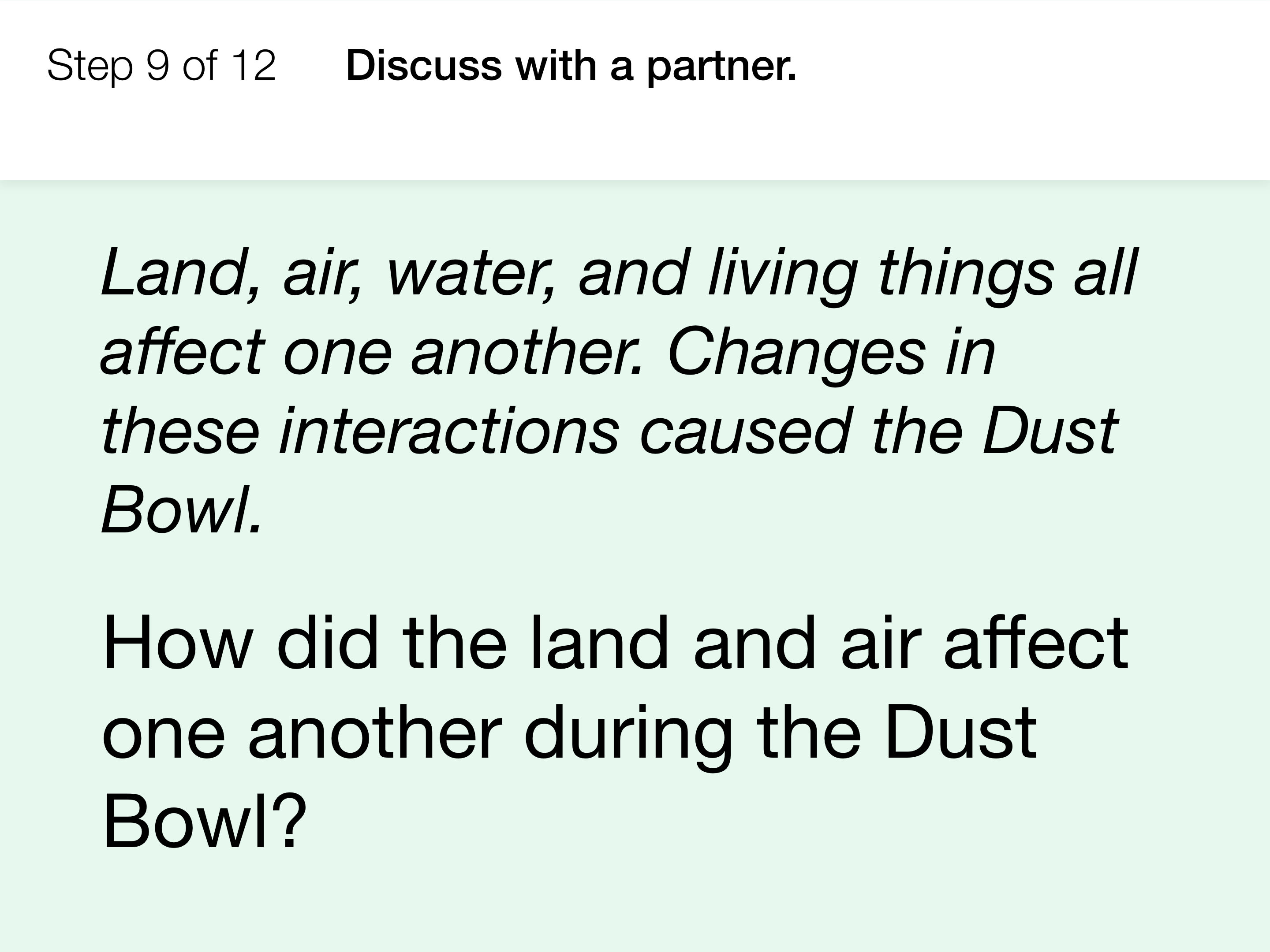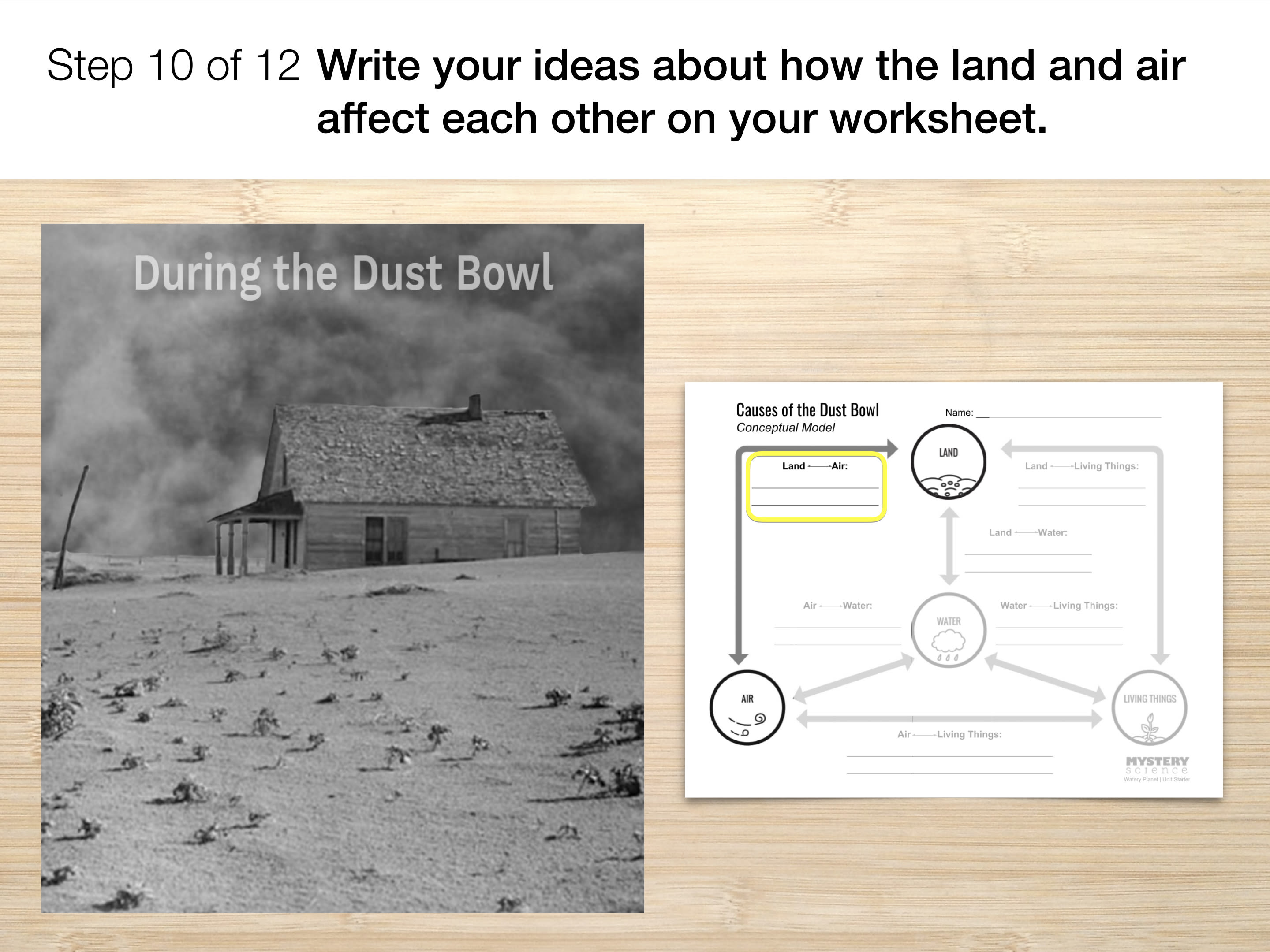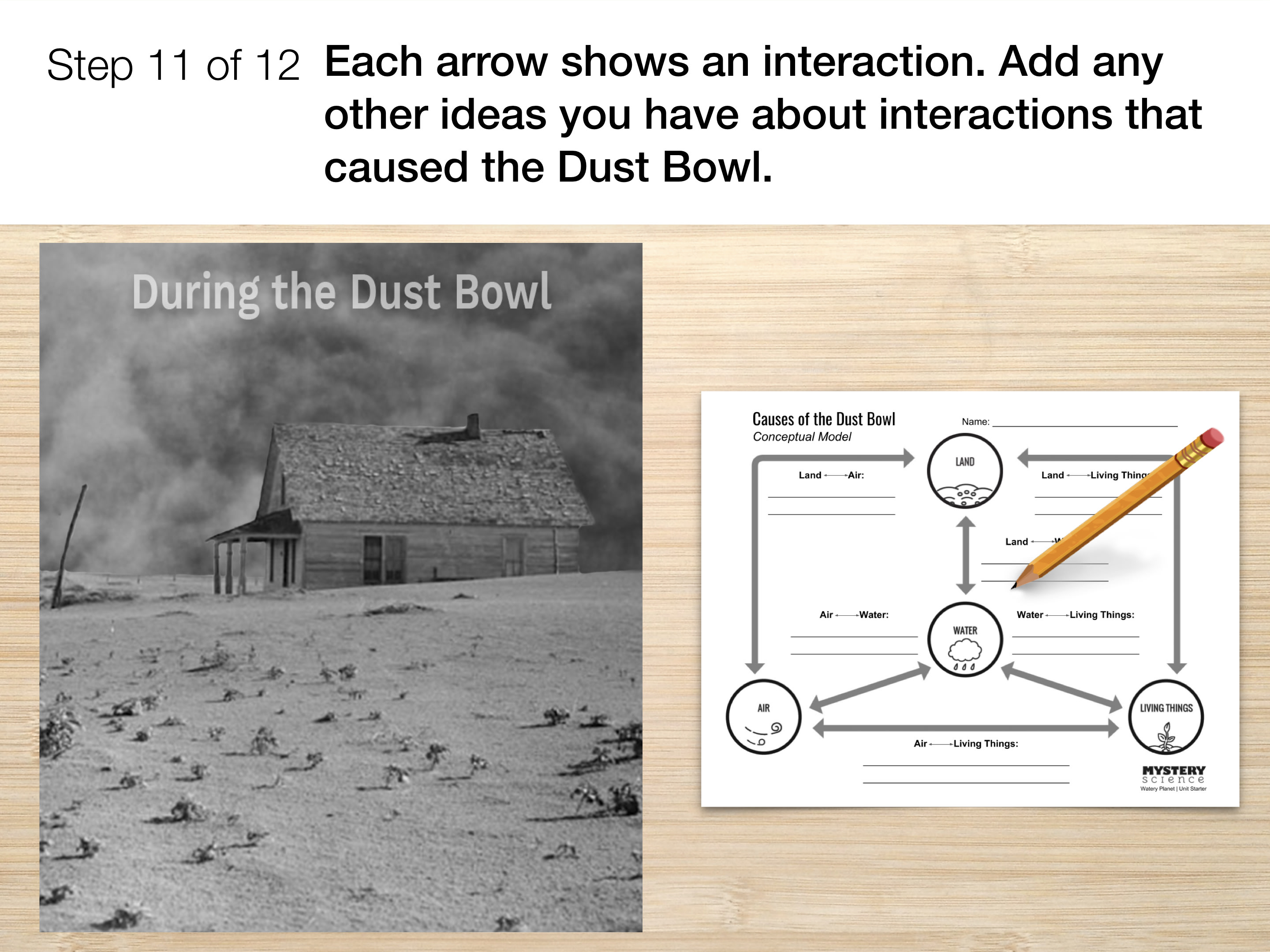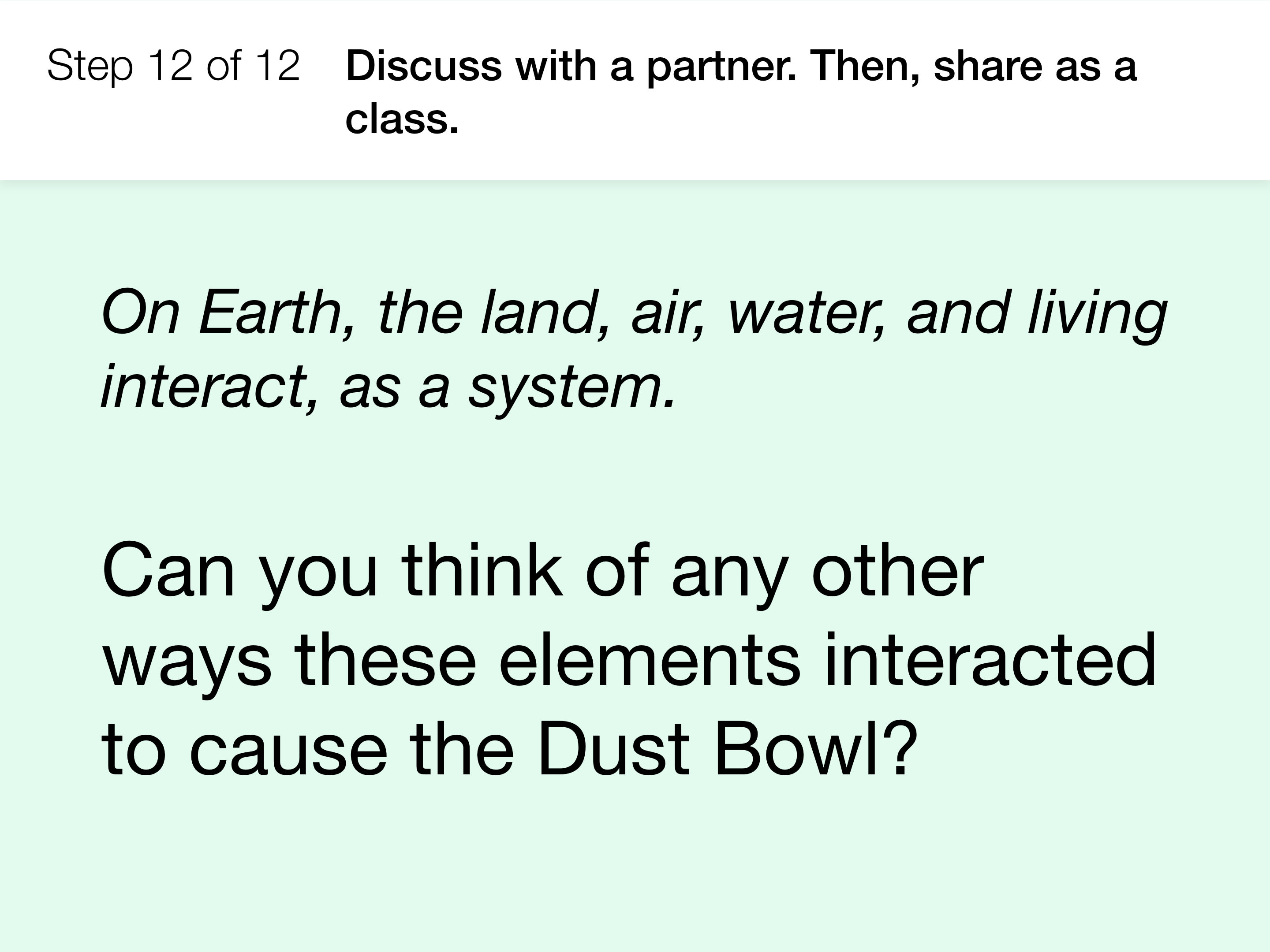Image & Video Credits
Mystery Science respects the intellectual property rights of the owners of visual assets.
We make every effort to use images and videos under appropriate licenses from the owner or by
reaching out to the owner to get explicit permission. If you are the owner of a visual and
believe we are using it without permission, please
contact us—we will reply promptly and make
things right.
Other
1940's: United States: Lady picks up baby from dust storm by
Video used unde license from Pond5.com: AV Geeks
Boise valley wheat field by
Image used under license from Flickr.com: WaterArchives.org
Buried Machinary Barn Dallas by
Image used under license from Shutterstock.com: Everett Historical
Carriage with a horse under blue sky by
Image used under license from Shutterstock.com: Adamsoc Studio
Dry Lake Bed by
Tim J Keegan
Dust Bowl Farm House by
Image used by Geoengineeringwatch.org
Farmers with horses plowing fields by
Image used under license from Shutterstock.com: Vyntage Visuals
Plain with some grass and flowers by
Image used under license from Shutterstock.com: Michael Rosebrock
Power farming displaces tenants by
Image used under Public Domain from Wikimedia: Dorthea Lange
Sandstorm timelapse by
Video used under license from Pond5.com: Tadinski13
Soil Drifting Over Farm Building by
Image used under license from Shutterstock.com: Everett Historical
